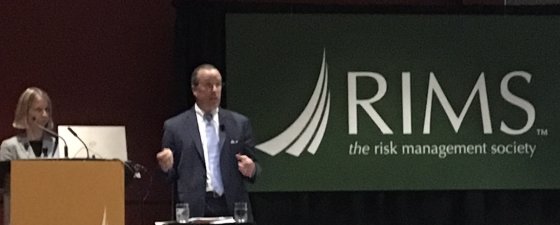Regardless of whether or not their organizations operate in states where the use of Official Disability Guidelines (ODG) has been adopted/mandated, risk managers can often leverage ODG data and the claim data from their risk management information systems (RMIS) to benchmark the medical and lost-time components of their workers compensation costs against national averages.
With its origins dating to 1995, ODG (www.mcg.com/odg) provides “unbiased, evidence-based guidelines” and analytical tools designed to “improve and benchmark return-to-work performance, facilitate quality care while limiting inappropriate utilization, assess claim risk for interventional triage, and set reserves based on industry data.”
The following are some ways risk managers can use ODG data in conjunction with their existing risk information tools to drive improvements in their workers compensation case management and achieve greater precision in loss reserve practices.
- Examine the data. ODG has a wealth of data that can be used to benchmark estimated incurred financials and return to work (RTW) best practices by job class, state, injury diagnoses, and numerous other confounding factors (e.g., obesity, diabetes, etc.). You can benchmark guidelines against both current and historical workers compensation claims to identify potential issues and opportunities for individual case management or program improvement. To evaluate trends, you need to capture and analyze detailed data on historical losses (a core capability of RMIS technology). Meanwhile, improving decision-making on open cases calls for the ability to track individual financial and treatment developments on a real-time basis. That is where your RMIS or claims administration platform combined with data streaming from your TPA or carrier can be keys to success.
buy xenical online www.cappskids.org/wp-content/uploads/2023/10/jpg/xenical.html no prescription pharmacy
- Be specific. When looking at historical loss trends and comparing them broadly to ODG loss and recovery data, the sharper your focus, the faster you will be able uncover issues and make needed adjustments to improve individual outcomes or overall practices. Scrutinize data by individual location, job function, injury and even body part involved to get meaningful insights that yield specific action steps and measurable improvements.
buy nolvadex online www.cappskids.org/wp-content/uploads/2023/10/jpg/nolvadex.html no prescription pharmacy
- Track open claims. Leverage the analytics from ODG to compare progress of specific cases against the statistical ODG guidelines. This will enable you to spot variances in recovery timelines and make reasonable adjustments to individual return-to-work plans.
- Set goals. You may want to start the benchmarking process with job functions or locations that have historically been the biggest drivers on total cost of risk. Conduct an analysis of historical claims against aggregated ODG data, identify significant variances in your practices versus ODG results, and target specific improvements in open cases. Monitor overall results on a quarterly basis to assess your progress and make any midstream adjustments to align your practices more closely to the ODG findings.
- Get help. ODG offers participants training through frequent webinars and other educational events. At the same time, RMIS providers can offer prescriptive guidance in automation that help clients optimize their workers compensation claims operations and return-to-work programs, including the adoption of the analytics available from ODG.
While there are many options available for employers to use predictive analytic benchmarks with workers compensation claims to drive improvements, ODG provides one of the most widely adopted measurements for tracking actual costs of injured employee cases and the success of return-to-work initiatives. When these resources are used in conjunction with a contemporary RMIS, risk managers can gain visibility into claims management issues, focus on improvements that accelerate recovery of injured employees, and start lowering the total cost of workers compensation risk.

 The concept of a culture of safety can be stalled by employers that say they want to be safer, but do little to implement real change.
The concept of a culture of safety can be stalled by employers that say they want to be safer, but do little to implement real change. Manufacturers, distributors, retailers, prescription benefit managers, doctors and clinics are all seemingly in the crosshairs of local municipalities and governmental entities, Engh noted.
Manufacturers, distributors, retailers, prescription benefit managers, doctors and clinics are all seemingly in the crosshairs of local municipalities and governmental entities, Engh noted.